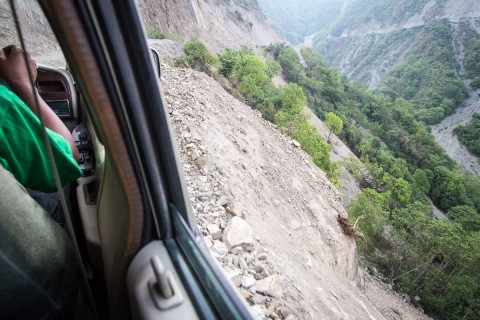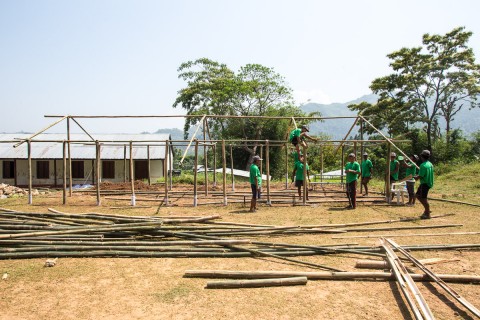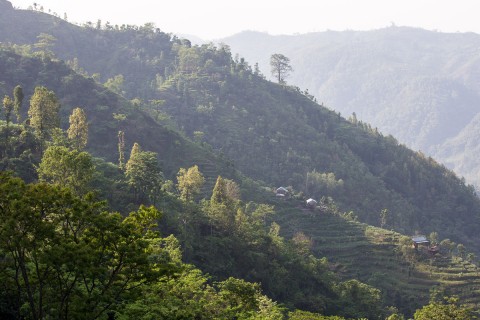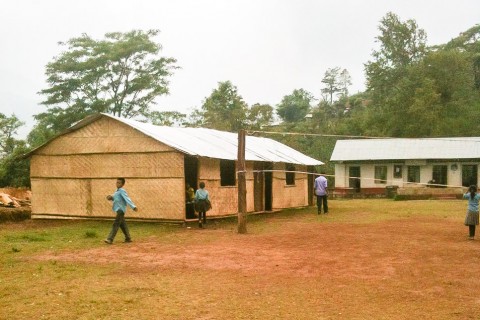Monumental task in Nepal completed
26-year-old Rajip Ratna Buddhacharya had no idea what awaited him when he took up a job as a civil engineer for Finn Church Aid (FCA).
Text: Antti Helin. Photos: Antti Helin & Rajip Ratna Buddhacharya
After the April earthquake, the Nepalese government tasked Finn Church Aid with the construction of 170 temporary learning spaces from bamboo to substitute for the ones damaged or destroyed. Some of the temporary spaces were built around the capital city of Kathmandu, some in the rural regions of Nepal.
For with this task, FCA hired 14 young Nepalese civil engineers to supervise the construction sites.
One of the most challenging parts of the operation, constructing eight temporary schools in the Gimdi region, 5 hours from Kathmandu, fell on Buddhacharya.
The scope of the challenge began to unravel for Buddhacharya on the way to Gimdi.
“The road to Gimdi was very frightening!” he says. The narrow, bumpy road ran along the edges of canyons. Along the way were signs of massive landslides caused by the earthquake and the many aftershocks.
More challenges at the schools
At the site, Buddhacharya was faced with more challenges. The houses in Gimdi stood far apart, scattered on the mountainsides, and the mobile phone network only functioned at certain locations.
“Communicating was a big problem. Mobile phones were useless. When I needed to talk to someone, I had to scream across the valley from the school”, Buddhacharya explains.
Often, it took a couple of hours for the wanted person to arrive.
The temporary schools were constructed next to the destroyed ones. Only three of the schools were along a road. Construction materials had to be carried by hand to the other five.
“The path leading to one of the schools wasn’t even wide enough for two people. There was a massive drop on one side. To another school we had to walk for six hours, and the ground there was so rocky that our hoes and shovels broke.”
Sometimes Buddhacharya had a guide to accompany him, other times he had to walk alone. More than once he got lost in the mountain jungles. The only way out was to climb to the highest hilltop to see which way was correct.
One time Buddhacharya thought he had a tiger on his trail.
“I heard rustle from the trees. I picked up a sturdy branch from the ground. I heard the noise again. A deer was watching me from the shrub.”
The harsh reality of the Nepalese countryside
The harsh reality of the Nepalese countryside began to reveal itself to the city boy. Power cuts were common. Food consisted of spinach and poor quality rice.
He went to the small health centre in the village to get help for a rash. Help was not available.
“There wasn’t really any medication at the health centre, not even any ointment for rashes.”
The people in the village lived in fear. Aftershocks rocked the ground repeatedly and many villagers were too afraid to sleep in their damaged homes.
“I wasn’t sure whether to sleep in a tent or in a house either. Finally, sleeping in a tent became too rough and I moved into an empty house. But I slept with the doors open, so that I could quickly run out.”
Then there was also the challenge of finding a workforce to build the temporary schools. In Gimdi, almost all houses had been damaged in the earthquake and the people were busy reconstructing their own homes.
“Everyone would have wanted to help, but they had no time”, Buddhacharya says.
Finally, workers were found, but halfway through the build, they disappeared to better paying jobs. After the earthquake, wages in construction got out of hand in Nepal and multiplied beyond what international organisations had budgeted for.
“It felt like I was doing something important”
Buddhacharya spent 20 days in Gimdi. But at no point was he about to throw in the towel.
“I didn’t allow myself to think that way. I had decided to finish my work.”
Despite the difficulties, the schools in Gimdi were finished in June, almost in schedule. Building one school took three to four days, a few more days in some of the most challenging locations.
Finn Church Aid constructed all of the 170 temporary schools, and has received praise, for example from Unicef, for the speed and quality of the work.
Buddhacharya was finally able to return home. He just had to make the hair-raising drive back to Kathmandu along the canyons’ edges.
Even if Buddhacharya had no idea what was in store for him when he started working for FCA, he says, without hesitation, that he would accept the job again.
“Yes! Working with the local community was rewarding. They really appreciated what I was doing. It felt like I was doing something important.”



